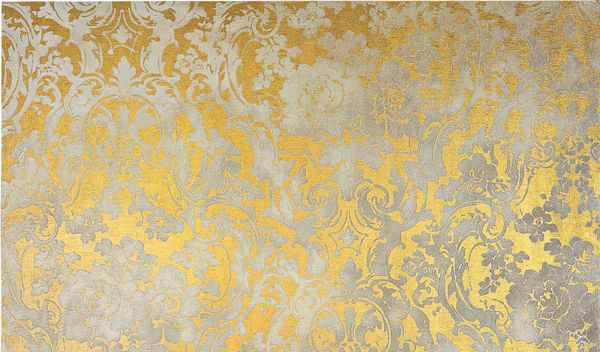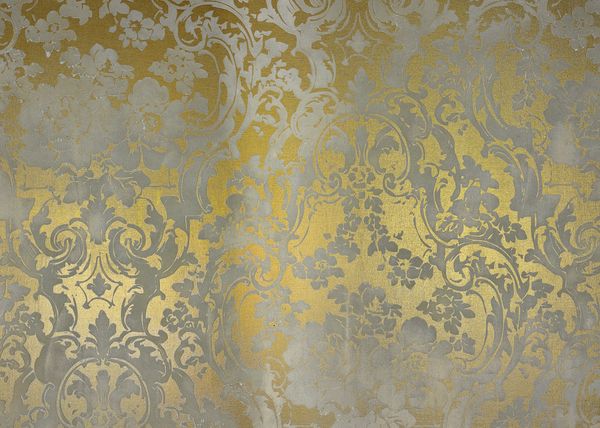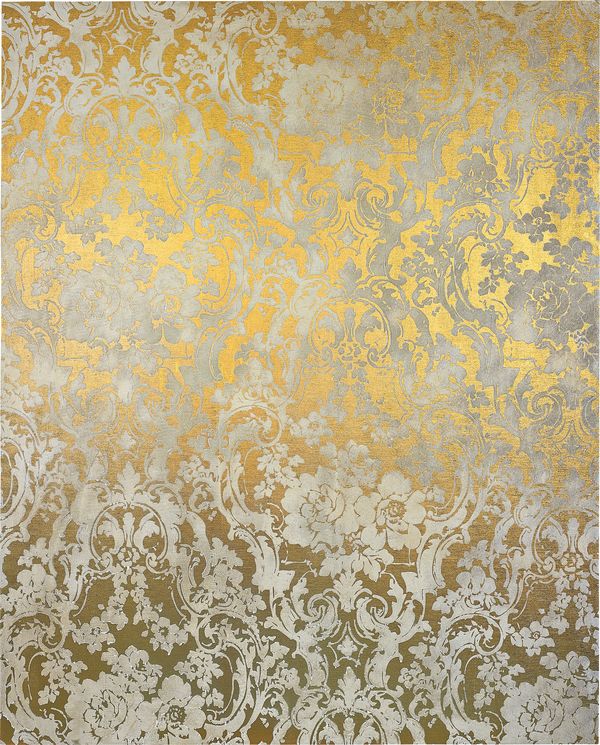Rudolf Stingel Untitled, 2007 (detail)
Artists have always been accused of being decorators, so I just went to the extreme...
—Rudolf Stingel
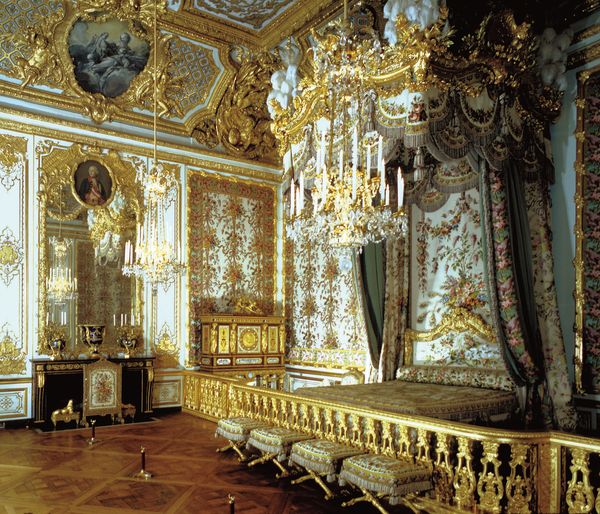
Stingel's painting appears as if lifted directly from Marie Antoinette's ornate bedroom walls at the Palace of Versailles. Seen here: View of the interior of the Queen's bedchamber at the Palace of Versailles, Versailles © Dmitri Kessel / The LIFE Images Collection / Getty Images
Stingel's practice is not painting as a medium, or painting for the sake of painting, or even the self-mocking of painting, but the celebration of painting as the derma, or skin, of reality, a very thin surface where we can leave our marks.
—Francesco Bonami, Phillips
Rudolf Stingel Untitled, 2007 (detail)
No other artist before Stingel has been able to challenge the notions of authorship and so radically change it as well.
—Henry Highley, Phillips
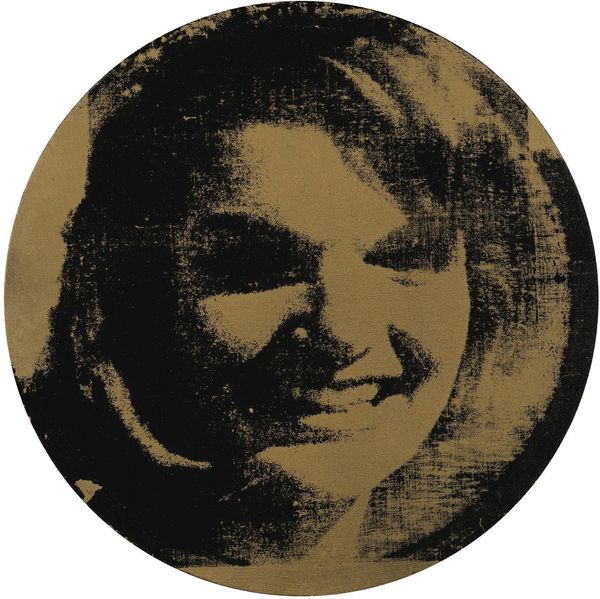
In Andy Warhol's Round Jackie (1964), the late wife of John F. Kennedy appears to dissolve under a perforated veil of silkscreen ink and gold paint, allegorically mirroring the frayed majestic gilding seen in Stingel's Untitled.
One cannot help but revel in the sheer brilliance of Rudolf Stingel's mesmeric work, Untitled. Only the greatest artists are capable of teasing out such aesthetic elegance from the complexity of their concepts, and Stingel achieves this with unbounded fair. Through seemingly alchemic artistic means the stencilled imagery and shimmering finish harbour acutely nuanced details, resulting in a painting as bold as it is subtle.
Untitled is a formidable example of Stingel's series of wallpaper paintings. Galvanised by opulent, gleaming surfaces, these works appear as if lifted directly from Marie Antoinette's ornate bedroom walls at the Palace of Versailles. Indeed, the complex designs that adorn their surfaces are derived from damask patterns of the late Baroque/Rococo period, a time when painting and sculpture became enmeshed in the very architecture that was intended to contain it. This particular work likewise looks for validation outside of traditional parameters, taking its ambient setting as well as the historic relationship between formal patterns and abstract art as points of creative departure.
Produced using a calculated application of stencils, the work nevertheless contains innumerable imperfections that disrupt the implied decorative repetition like tantalising chinks in its highly polished armour. Blemishes and irregularities indicate the artist's engagement with his medium on a tactile level; Stingel knowingly leaving clues to his modes of intervention whilst concurrently subverting the implied grandeur of the work's gold-bullion finish.
This quasi-mechanised production aligns Untitled with the creative devices employed by preeminent artists of the late twentieth century. Andy Warhol in particular demonstrated comparable methodologies; his purposefully imprecise screen-printing technique corrupted the pure ideals of mass production and the celebrity image, causing tension between the models of perfection and demise that pervaded popular culture. This, perhaps, manifested itself most signifcantly in his work Round Jackie from 1964 in which the late wife of John F. Kennedy appears to dissolve under a perforated veil of silkscreen ink and gold paint, allegorically mirroring the frayed majestic gilding seen in Untitled.
Confronted by their reflection, the viewer becomes both the work's witness and subject, suspended in its patterns like a hazy trace of humanity lingering amongst history's decadent shadows.
The technique used to produce Stingel's prized effect echoes a set of instructions he produced in 1989. The instructions delineated the method of production for a series of monochromes that were to be exhibited beside it, giving the viewer access to the artist's concept and means of fabrication. This piece in our Evening Sale deftly brings the viewer a step further into the fold. Here, their entire environment dissolves into the seductive hues of reflective gold paint, evoking a blurred, idealised reality woven together by strands of fact and fantasy. Confronted by their reflection, the viewer becomes both the work's witness and subject, suspended in its patterns like a hazy trace of humanity lingering amongst history's decadent shadows.
This illusive and paradoxical quality is crucial to the character of Untitled. Its graphic structure proposes a dual analysis; the work is both a representation and literal manifestation of the abstract floral pattern it evokes, ostensibly lampooning the aesthetic of the wall on which it hangs. Untitled therefore cunningly floats between typical categorisations; part abstraction, part figuration, part physical object, it reflects a moment in painting of incredible originality and boundless scope.
Rudolf Stingel Untitled, signed and dated 'Stingel 2007' on the reverse
Where the gap between reality and illusion becomes uncertain, the visual authority of Untitled leaves the viewer without doubt. Here is a painting of superlative virtue and a true masterpiece of contemporary painting.
